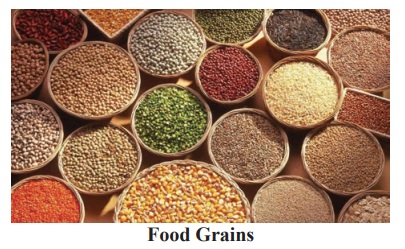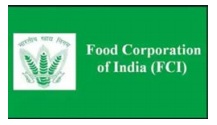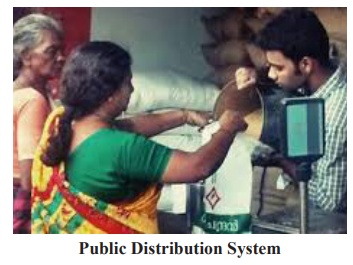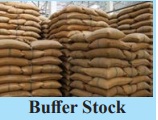Food Security and Nutrition | Economics - Availability and Access to Food Grains | 10th Social Science : Economics : Chapter 3 : Food Security and Nutrition
Chapter: 10th Social Science : Economics : Chapter 3 : Food Security and Nutrition
Availability and Access to Food Grains
Availability and Access to Food Grains
Thus food security for people in a country is not
only dependent on the quantum of food available but also on the ability of
people to purchase/access food and to stay in appropriate healthy environment.
Just as other developmental issues, food security of people is also related to
a country’s overall development process. After Independence, India chose to
adopt a planned developmental model.

After an
initial focus on agriculture, industrialisation was given priority. The
recurrent droughts experienced by India pushed her to be dependent on imports
of food grains. However, the available foreign exchange reserve could not
permit open market purchases and import of grains. India had to plead for food
grains from richer countries at concessional rates. United States of America
extended assistance through its Public Law 480 (PL 480) scheme to India during
early 1960s.
A growing
country with a massive population was perceived to be a potential candidate for
revolution. The American administration and philanthropic organisations like
Ford Foundation formulated a plan to increase food production in the country by
introducing High Yielding Varieties (HYV) of wheat and rice. This programme was
implemented in select districts where irrigation was assured. The results were
promising and the programme was extended to cover a larger number of districts.
Thus,
Green Revolution was born in the country paving way for self-sufficiency in
food grain production. Increased food grain production was made possible by an
increase area cultivated with HYV of rice and wheat as also an increase in the
yield of these major cereal crops. Area under food grains was a little more
than 98 million hectares during early 1950s. The country was producing just 54
million tonnes of food grains then with an average yield of food grains of 547
kg per hectare. The food situation has steadily improved over a period of 65
years. Area under foodgrain cultivation has grown to 122 million hectares, with
an increase of five-fold increase in food grain production. Yield of food
grains has increased four-fold between the time of independence and at present.

This growth in food grain production was made possible by the HYV programme, which was implemented as a package. Apart from introducing fertiliser-responsive high-yielding varieties of rice and wheat, it ensured the availability of subsidised chemical fertilisers for the farmers. Cheaper farm cre di t w as disbursed to farmers through co- operative banks and societies. Minimum support price (MSP) for the crops were announced at the beginning of the season and the state procured the harvested grains through the Food Corporation of India (FCI). The FCI had built huge storage godowns and built buffer stocks of food grain during the harvest season to be distributed all through the year.
Minimum Support Price
Minimum Support Price is a price fixed by an expert group for a
particular crop by considering various costs involved in the cultivation of
that crop. After announcing the MSP, the State will open procurement centres in
places where these crops are widely grown. However, the farmers are free to
sell in the open market if they get a better price for their crop produce. On
the other hand, if the open market price is lower than the MSP, the farmers
would get an assured price (the MSP) by selling their produce to the FCI.
The rapid
increase in food grain production was accompanied by appropriate tec hnological
interventions in the dairy, poultry and fisheries sectors. As a result, the
milk production in the country witnessed an eight-fold increase, egg production
grew 40-fold and fish production by 13-fold between the time of Independence
and mid-2000s. However, India could not succeed in attaining self-sufficiency
in the production of pulses and oil seeds. Therefore, India depends on imports
to meet the requirements of people.
Public Distribution System
Tamil
Nadu has adopted an ‘Universal’ PDS, the rest of the states in India had a
‘Targeted’ PDS. Under universal PDS all the family ration card holders are
entitled to the supplies from PDS. In the targeted PDS, the beneficiaries are
identified based on certain criteria and given their entitlements, leaving out
the rest. Both the Union and the State governments subsidised the supplies
distributed through PDS. The level and quantum of subsidy also varied across
states.

Subsequently,
the National Food Security Act (NFSA) was passed by the Indian parliament in
2013. The NFSA covers 50% of urban households and 75% of the rural households.
These households are known as priority households identified based on a set of
criteria. Priority households of this country now have the right to food supply
through PDS. The Union government supplies rice at the rate of ₹ 3 per kg, wheat at the rate of ₹ 2 per kg, and millets at the
rate of ₹ 1 per kg under NFSA. Tamil Nadu continues
to have the universal system of PDS and supplies rice at free of cost to all
card holders.
National Food Security Act in Tamil Nadu
On 1 November 2016, National Food Security Act was implemented
in Tamil Nadu after holding out for three years.
Role of Consumer Cooperatives in Food Security
Consumer
cooperatives play an important role in the supply of quality goods at
responsible rates to common people. There is a three-tier structure of consumer
cooperative societies in India. They are primary consumer cooperative
societies. Central consumer cooperative stores and state level consumer
federations. More than 50,000 village level societies are engaged in the
distribution of consumer goods in rural areas. This scheme is playing an
important role in food security in India. For example out of all fair price
shops running in Tamil Nadu, around 94% are being run by cooperatives.
Buffer Stock
Buffer stock is the stock of food grains, namely wheat and rice,
procured by the government through the Food Corporation of India (FCI). The FCI
purchases wheat and rice from the farmers in states where there is surplus
production. The farmers are paid a pre-announced price for their crops. This
price is called Minimum Support Price (MSP). The MSP is declared by the
government every year before the sowing season to provide incentives to farmers
for raising the production of these crops. The purchased food grains are stored
in granaries.

Buffer stock is done to distribute
food grains in the deficit areas and among the poorer strata of the society at a
price lower than the market price also known as the Issue Price. This also
helps resolve the problem of shortage of food during adverse weather conditions
or during the periods of calamity.
Related Topics